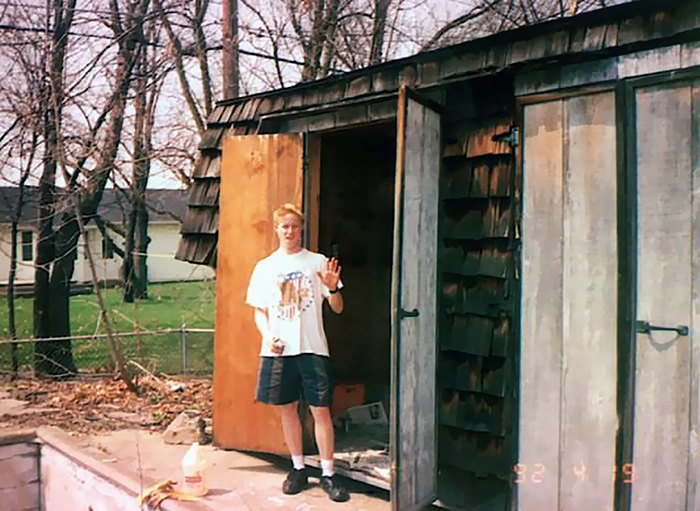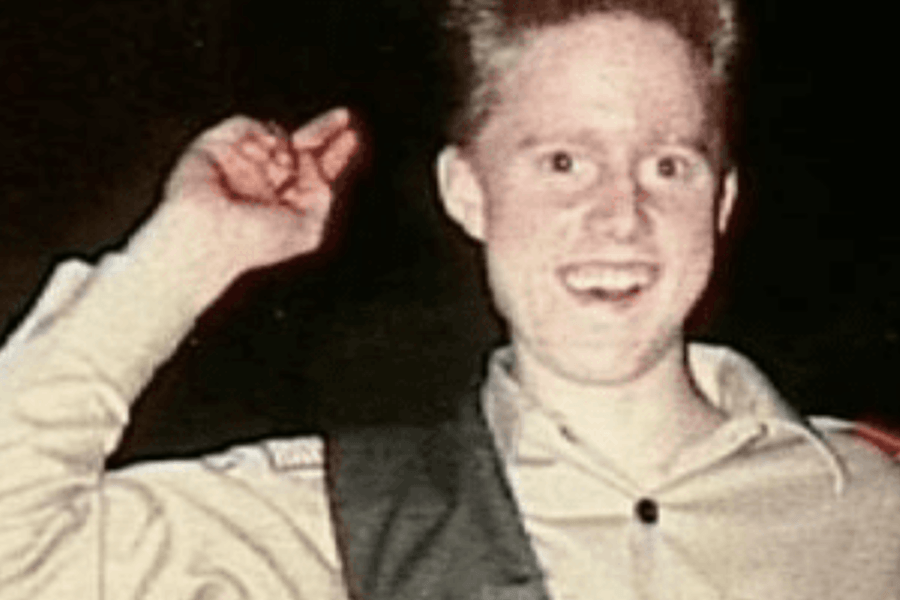In June 1995, the neighborhood of Golf Manor, Michigan, was suddenly confused as several men converged on a small house in Commerce Township.
Three men wore ventilated moon suits and swarmed the house’s backyard. They then started breaking down the door of a shed with electric saws.
The house belonged to Michael Polasek and Patty Hahn, who lived there with Patty’s teenage son, David.
As curious and nervous neighbors started to gather and discuss what the men in funny suits wanted from their quiet, middle-aged neighbors, one of them casually mentioned that the shed emitted an eerie glow at night.
It was the beginning of a revelation that was awe-inspiring and frightening. David, a young teenage boy scout, had been building a nuclear reactor in the shed, putting Gold Manor’s 40,000 residents at risk.

A life of experimentation
From a very young age, David loved science and had often conducted experiments since he was ten. His grandfather had given him a book called “The Golden Book of Chemistry Experiments.” It was his gateway to the marvels of science and what would happen much later in Golf Manor.
He followed all the experiments in the book, buying beakers and test tubes for his experiments. At 14, he had already perfected making volcanoes and even created nitroglycerin in his home lab.
These experiments made his father move David’s lab from his bedroom to the basement and the shed. Since his parents’ divorce, he would spend time with his mother in Golf Manor. She also allowed him to build a lab in the backyard shed.
From the outside, David seemed like your ordinary teenage boy. He joined the boy scouts, worked part-time in a fast-food restaurant, played baseball, and did odd jobs in the neighborhood.
No one knew he had been building something in his mother’s shed from the scraps he collected. He took materials from smoke detectors, camping lanterns, and gunsights that would be vital in building a homemade nuclear reactor.

Going undercover
David’s passion for radioactive and fissile materials started when he researched atomic energy to earn an Eagle Scout badge. He created a pamphlet and a small nuclear toy reactor to demonstrate how atomic energy worked.
This research allowed him to visit a radioactive isotope laboratory and see how they handled radioactive materials. Inspired and armed with additional insight, he was awarded his Eagle Scout Badge in 1991. He was only 15.
But David set his sights on something more significant – creating a nuclear reactor. To do this, he needed to do some undercover work. So when he was 17, he wrote to several groups posing as a high school physics teacher.
One of his letters was received by the Nuclear Regulatory Commission. Upon receiving the correspondence, an agency director gave him a list of isotopes that could create and maintain a chain reaction.
The director also sent David a list of commercial sources and pricing data to benefit his “students.”
It was the kind of information a wunderkind genius like David would need to build his nuclear reactor.
David’s “nuclear reactor”
After collecting the radioactive materials thorium, radium, americium, and lithium, he started his backyard project. He used a lead block as a reactor and a simple bunsen burner to purify his thorium.
For protection against radioactivity, David used coffee filters, pickle jars, and gas masks. Soon, he was able to create a neutron source.
Technically, it wasn’t a nuclear reactor but part of a mechanism used in nuclear power.
Though it was only part of a reactor, it emitted a thousand times more than normal background radiation. When the radiation levels went too high, David began dismantling his experiment.
As he did so, his “reactor” might have been leaking radiation in Golf Manor and risking the lives of its residents.
Authorities catch up
His neighbors had reason to suspect that David was stealing from other people. Then, on August 1994, someone tipped off the police, and they stopped David’s car on suspicion of stealing tires.
But when the police started the search, David warned them of radioactive materials in the vehicle. Because of this incident, agencies like the Department of Energy, the Environmental Protection Agency, and the FBI were notified.
It took a year for the authorities to investigate David’s case. Since he was a minor in 1994, his name was not divulged to the press and public.
So, on that fateful day in June 1995, when everything was made clear to the authorities, 11 men went to his mother’s backyard shed in Golf Manor and designated it a hazardous materials cleanup site.
The men dismantled the shed, loaded everything they found in 39 barrels, and brought it to a dump facility in the middle of the Great Salt Lake Desert.
David’s backyard experiment joined other radioactive debris from atomic bomb factories and other contaminated supplies from industrial sites.
Fortunately, there was no detectable leak from the shed. The residents of Golf Manor were safe after the authorities cleaned up the site. Unfortunately, the same could not be said about David.
A life in ruins
Though David was not identified in reports, the scandal still affected his life. The charges were dropped because no agency had clear jurisdiction over the case.
Though David was let go, he could not go to his mother’s shed until the cleanup was completed. He also refused to get tested for radiation poisoning after his arrest.
He soon became depressed after the death of his girlfriend and his mother’s suicide. After graduation, he joined the US Navy and served briefly in the US Marine Corps. After an honorable discharge, he found himself once more in Michigan.
In 2007, David was again arrested for possibly possessing a second neutron source in his freezer.
Later that year, he was charged with stealing smoke detectors (possibly to get americium). He was sentenced to 90 days in jail as well as medical and psychiatric treatment for paranoia and schizophrenia.
In 2016, David died in his Michigan home at 36. Later, it was revealed that David died due to the combined effects of alcohol, fentanyl, and the sedative diphenhydramine.
Sadly, the boy scout who built a nuclear reactor could not let go of his backyard project, and his obsession led him to spiral later in life.
References:
https://arstechnica.com/science/2016/11/this-fall-the-radioactive-boy-scout-died-at-age-39/
https://web.archive.org/web/20070929095926/http://www.freep.com/apps/pbcs.dll/article

